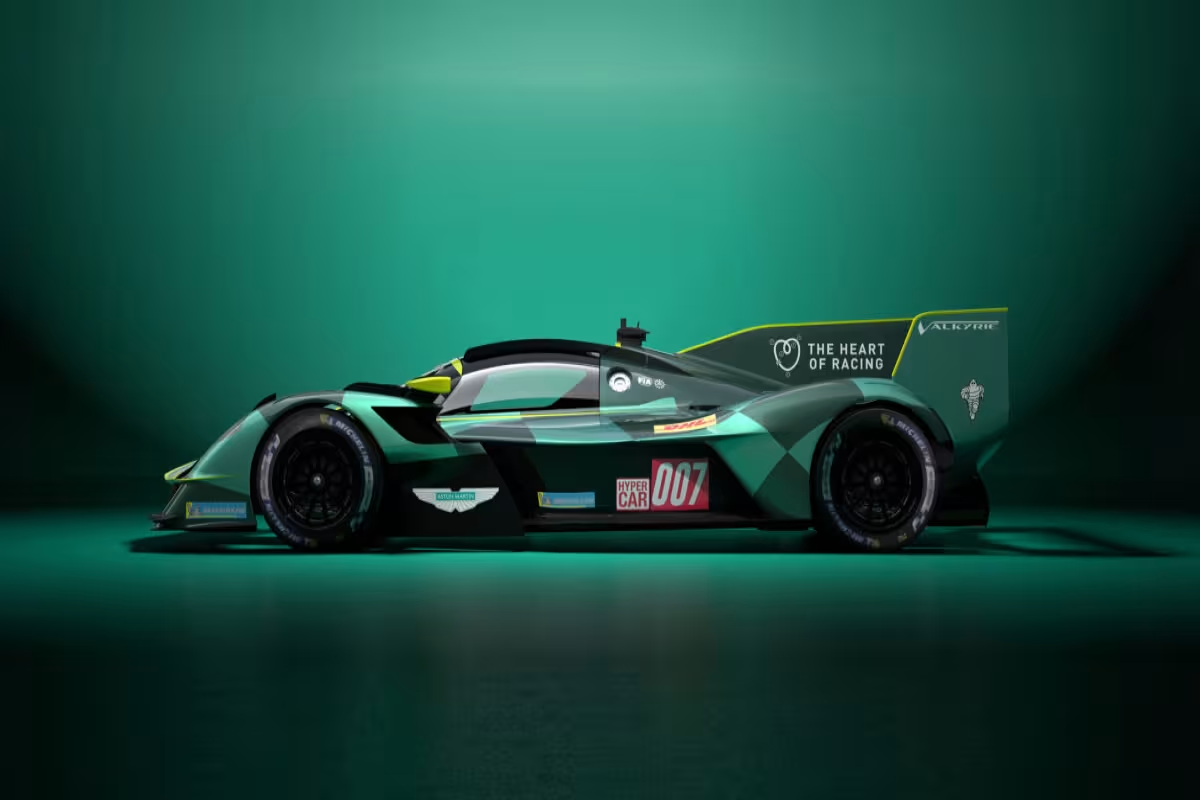
SHERIDAN, WYOMING – Feb. 5, 2025 – Aston Martin's Valkyrie LMH has finally been unveiled, five years after the project's initial conception. This car represents the closest realization yet of the original vision for the Le Mans Hypercar rules: a road-based hypercar adapted for racing. Aston Martin will be the sole competitor in the Hypercar class fielding a car with a direct lineage to a homologated road version.
Development and Powertrain
Developed in collaboration by Aston Martin Performance Technologies, THOR (The Heart of Racing), and Multimatic, the Valkyrie LMH leverages the foundation of the road car and tailors it to the LMH regulations. The road car's 6.5-liter, Cosworth-developed naturally aspirated V12 engine has been detuned to meet the rules' mandated power output of 580kW, down from approximately 750kW in the road-going version. Notably, the Valkyrie LMH will be the only LMH car running without a hybrid powertrain at its debut in Qatar at the end of February, despite the road car featuring a hybrid system.
Adam Carter, head of endurance motorsport at Aston Martin, explained the decision to rely solely on internal combustion engine (ICE) power to PMW. "Hybrid systems come with a significant mass consequence, so to take a car which is also carrying a V12 which comes with a mass trade as well, when you do the summation of everything it becomes, let’s say, a different challenge.” He also pointed out that the road car's hybrid system is located on the rear axle, while the race car would ideally have it on the front axle. Implementing such a change would have required modifications to the monocoque and other chassis components, resulting in further weight penalties. Maintaining the Valkyrie's styling cues was another key factor for the brand, and integrating a hybrid system would have introduced different cooling requirements, making packaging the necessary heat exchangers and associated inlets more difficult.
Aerodynamics and Regulations
The regulations necessitated significant changes to the suspension and bodywork compared to the production car, which incorporates both active chassis control and aerodynamics. According to Carter, extensive modifications were made to the underfloor to align the aerodynamic performance with the regulatory performance window.
“We’ve had to redefine the aerodynamics of the car,” Carter explained. “We went out with great intention of leaving as much of the, let’s say, outward facing surfaces as per the Valkyrie surfaces. Because it’s very important that it’s the full representation of the Valkyrie where possible. So in terms of the repositioning in the performance window, a lot of that is on the under floor and front wing area, and per the other LMH and LMDH cars, there’s an amount of work put in place around the aerodynamic stability criteria, so apertures in fenders and rearing end plates.”
Regarding the aerodynamic performance comparison between the race car and the road car, Carter offered a measured response. “It’s not a straightforward answer, because of the way production car operates with this active aerodynamics. Obviously the LMH car is a passive vehicle, whereas the road cars are fully active platform car. So it would be unfair to do a comparison, because in different conditions, the active car has given itself different performance.”
Testing and Debut
Aston Martin has conducted a testing program in the U.S. and has accumulated over 15,000km of running so far. Further endurance tests are planned once the car is homologated and makes its WEC debut in Qatar.